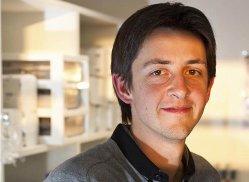Single-Pull
 Single molecule pull-down platform to dissect protein-protein interactions in neurobiology
Single molecule pull-down platform to dissect protein-protein interactions in neurobiology
> Principal investigator : Vincent Studer
.
> Objectives of the project
The main objective of this project is to build a commercial instrument able to perform single-molecule pull-down of fluorescently tagged proteins from a cell extract in a simple ans automated fashion. To reach this goal, we will apply single-molecule, TIRF and FRAP imaging modalities and develop quantitative analysis software in order to extract statistical information of the composition and stoichiometry of individual protein complexes.
.
> Main results
During the first year of the project we managed to :
- Pattern the bait protein at precise locations with a controlled density
- Define a protocol to specifically target the bait protein with dedicated anchors
- Develop a dedicated software able to analyze multicolor single molecule fluorescence, co-localization and photobleaching steps (quantification)
.
> During the second year of the project
- We optimized our multilayer protein coating to elicit specific recognition between purified adhesion proteins on the patterned substrate and the recombinant counter receptors expressed in living cultured cells (N-cadherins, SynCam, Neurexin/Neuroligin complexes)
- We managed to perform reproducible FRAP (Fluorescence Recovery After Photobleaching) on GFP tagged receptors accumulated at the micro-patterns, providing a way to quantify ligand-receptor interaction rates
- Alveole our industrial partner commercialized a fluid handling robot based on our prototype
.
> Working plan to continue
- We will establish a bank of interaction rates characterizing various synaptic adhesion complexes. These results are expected to be published within a year
- Increase the throughput of the system (software and liquid handling)
.


